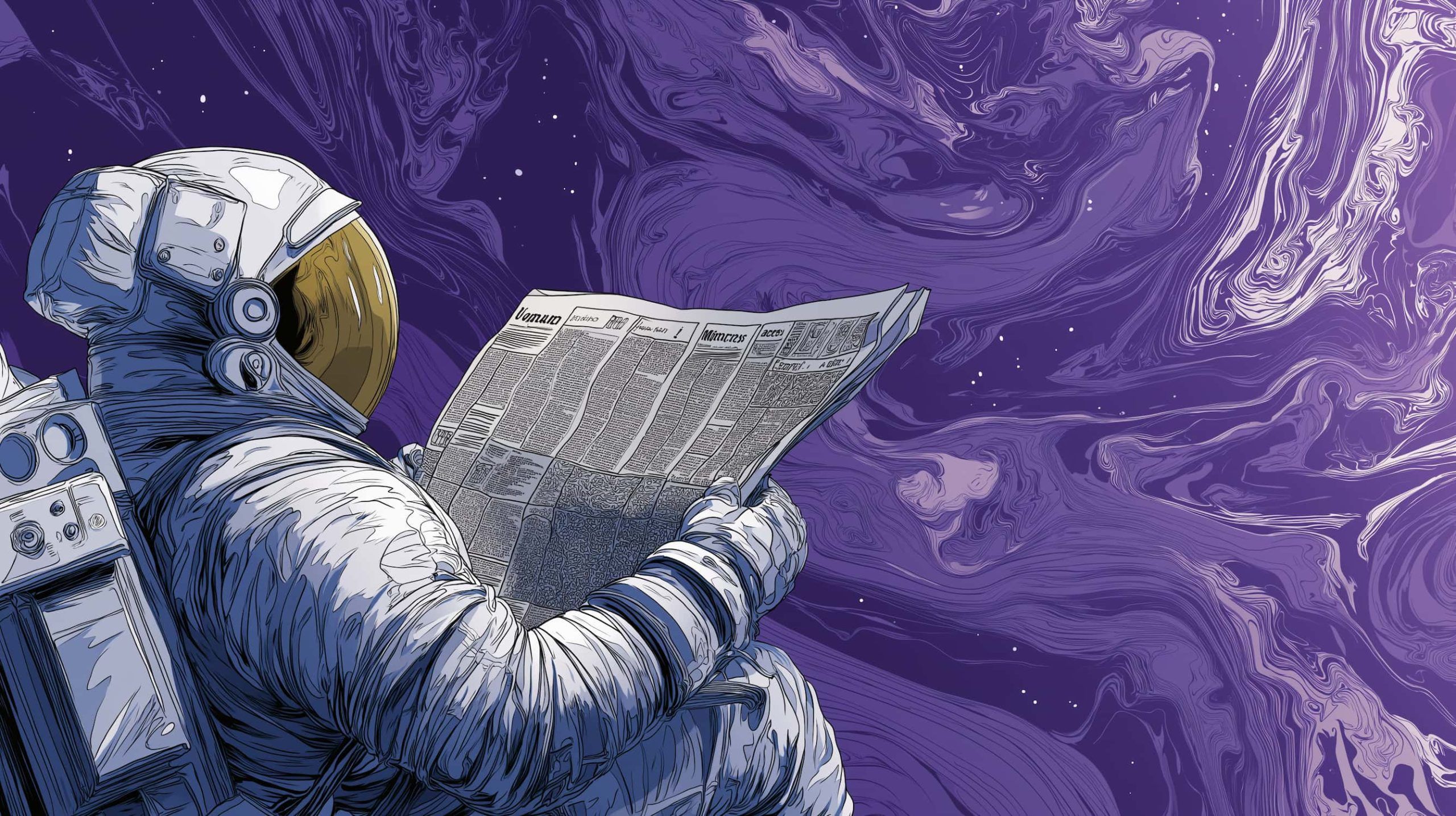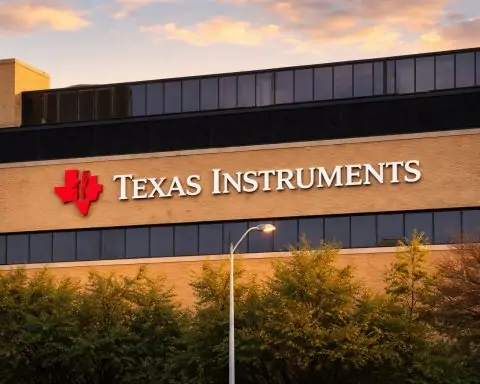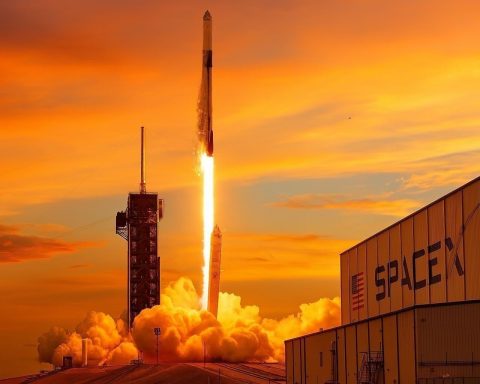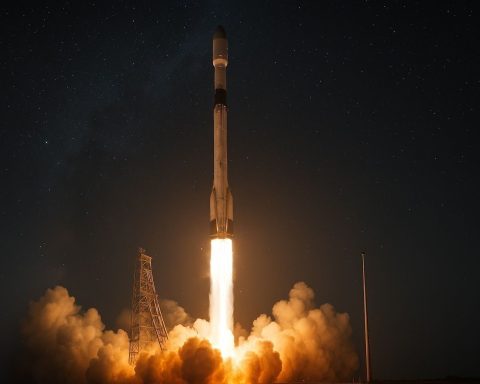- On Aug. 17, China launched the Long March-4C from Xichang at 4:55 p.m. local time with the Shiyan-28B 02 satellite for space environment exploration and technology tests.
- Hours later on Aug. 17, China launched a Long March-6 from Taiyuan at 10:15 p.m., deploying the ninth batch of low-Earth orbit satellites to form a new internet constellation.
- These dual Aug. 17 launches marked the 589th and 590th missions of China’s Long March rocket family.
- On Aug. 17, Indian astronaut Shubhanshu Shukla returned to New Delhi after piloting Axiom Space’s Ax-4 mission, which launched June 25 and splashed down July 15 after about 282 orbits.
- SpaceX’s Aug. 18 Falcon 9 mission from Vandenberg carried 24 Starlink satellites, marking SpaceX’s 100th Falcon 9 launch of 2025 and the 72nd Starlink deployment of 2025, bringing the year’s total Starlinks to 1,786.
- Booster B1088 on its 9th flight was slated to land on the Pacific droneship “Of Course I Still Love You,” which would be the 489th Falcon booster recovery if successful.
- SpaceX’s Starship Flight 10 has been cleared by the FAA for liftoff and is slated for Aug. 24 from Starbase, Texas, with prior Flight 9 on May 27 and a June test stand explosion of Ship 36, and will test engine cut-out burns, dummy payload ejections, a single-engine relight, and new hardware to assess orbital reusability.
- NASA and Google are testing the Crew Medical Officer Digital Assistant (CMO-DA), an AI medical assistant that could diagnose and manage health issues autonomously for lunar and Martian missions given deep-space delays.
- Mercury’s radius is shrinking by about 2.7 to 5.6 kilometers since formation, according to an AGU Advances study published Aug. 17.
- Loveless and Klimczak estimate Mercury’s diameter has contracted roughly 5 to 11 kilometers in total, and they suggest applying their fault-scarp method to other bodies such as Mars.
China Launches Two Space Missions in One Day (Aug. 17)
China executed back-to-back orbital launches on Sunday, August 17. The first saw a Long March-4C rocket lift off from Xichang at 4:55 p.m. local time, carrying the Shiyan-28B 02 satellite for space environment exploration and technology tests [1]. Hours later, a modified Long March-6 rocket launched from Taiyuan at 10:15 p.m., deploying a “ninth batch” of low-Earth orbit satellites to form a new internet constellation. The satellites reached their intended orbits successfully, marking the 589th and 590th missions of China’s Long March rocket family [2]. These dual launches underscore China’s rapid cadence in space operations.
Indian Astronaut Gets Hero’s Welcome After ISS Mission
Group Captain Shubhanshu Shukla – the second Indian to ever travel to space and the first to visit the ISS – returned home to a hero’s welcome in New Delhi in the early hours of Aug. 17 [3]. He served as the pilot on Axiom Space’s Ax-4 commercial mission, which launched June 25 and splashed down off California on July 15 after ~282 orbits. At Delhi airport, Shukla was greeted by his family, India’s Science & Technology Minister Dr. Jitendra Singh, Delhi Chief Minister Rekha Gupta, and a cheering crowd with tricolor flags [4]. (Dr. Singh hailed the homecoming as “a moment of pride for India… as the iconic son of Mother India, #Gaganyatri Shubhanshu Shukla [returns]” [5].) Shukla spent a year in the U.S. training for the mission, and he brings back invaluable hands-on experience for India’s Gaganyaan human spaceflight program, which aims to launch its first crew by 2027 [6]. His mission – part of a collaboration with NASA and commercial partners – symbolizes India’s re-entry into human spaceflight after four decades, setting the stage for an indigenous crewed launch in the coming years.
SpaceX’s 100th Falcon 9 of 2025 Deploys New Starlink Batch (Aug. 18)
SpaceX notched a major milestone with its 100th Falcon 9 launch of the year, targeted for Monday morning, August 18, from California. The mission – carrying 24 Starlink internet satellites – is the company’s 72nd Starlink deployment of 2025, bringing the total number of Starlinks orbited this year to an astonishing 1,786 [7]. Liftoff from Vandenberg Space Force Base was scheduled for 9:23 a.m. PDT (1623 UTC), using veteran booster B1088 on its 9th flight [8] [9]. SpaceX planned to land the booster on the Pacific droneship “Of Course I Still Love You,” which would mark the 489th successful Falcon booster recovery to date if achieved [10]. This high-tempo launch (SpaceX’s second Falcon 9 flight in under four days) highlights the company’s unprecedented cadence – a pace boosted by reusability – in meeting both Starlink deployment and customer launch demands.
Starship Flight 10 Cleared for Liftoff, Promises New Tests
SpaceX’s Starship program is gearing up for a critical test as regulators and engineers give the green light for the 10th integrated flight of the massive rocket system. The U.S. FAA has officially cleared SpaceX to proceed with Starship Flight 10, now tentatively set for Aug. 24 from Starbase, Texas [11] [12]. This comes after exhaustive reviews of the previous test’s anomalies – the last Starship (Flight 9 on May 27) lost its upper stage due to a pressurization system failure – and after a June test stand explosion destroyed the originally slated Ship 36 vehicle [13] [14]. Hardware and operational changes have been implemented to improve reliability ahead of Flight 10 [15] [16].
“The upcoming flight will continue to expand the operating envelope on the Super Heavy booster, with multiple landing burn tests planned,” SpaceX noted, “and will target similar objectives as previous missions, including Starship’s first payload deployment and multiple reentry experiments” [17]. In practice, this means Booster 16 and upper-stage Ship 37 will attempt new maneuvers: the Super Heavy booster will perform several engine cut-out landing burns to test redundancy, and Starship will try to eject a set of dummy payloads (Starlink-sized test articles) on a suborbital trajectory [18] [19]. The upper stage will also trial a single-engine relight in space and carry modifications (such as deliberately removed heatshield tiles and added “catch point” fittings) to gather data on reentry stresses [20] [21]. All these experiments aim to validate systems for eventual orbital reusability. If successful, Flight 10 could mark a pivotal step toward rapid, fully reusable Starship launches – crucial for SpaceX’s Starship program and its deep-space ambitions.
NASA & Google Trial an AI Medical Assistant for Moon/Mars Missions
NASA is teaming up with Google to develop an AI-powered medical assistant that could accompany astronauts on future lunar and Martian missions [22]. The prototype system, known as the Crew Medical Officer Digital Assistant (CMO-DA), acts as a smart medical aide to help crews diagnose and manage health issues autonomously when far from Earth. On deep-space journeys, communication delays (up to ~45 minutes round-trip for Mars) make real-time consultations with Earth doctors impractical [23]. The AI assistant addresses this by leveraging advanced natural language processing and machine learning to analyze symptoms and recommend treatments on the spot. “Trained on spaceflight literature, the AI system uses cutting-edge natural language processing and machine learning techniques to safely provide real-time analyses of crew health and performance,” Google representatives said in an August 8 statement [24]. Early testing has shown the system can suggest reliable diagnoses based on an astronaut’s reported symptoms, offering a critical safety net if a medical emergency arises millions of miles from home [25]. NASA and Google are now working with flight surgeons to refine the model’s accuracy [26]. Beyond space, such technology could also prove valuable in remote Earth environments where doctors aren’t readily accessible [27]. This AI medical assistant concept aligns with NASA’s Artemis program goals, ensuring crews venturing to the Moon or Mars can handle health challenges independently when needed [28] [29].
Mercury Is Shrinking: New Study Reveals Planet’s Contraction
In planetary science news, researchers have found that Mercury is still shrinking – and by a significant amount. A new analysis of the cliff-like thrust faults on Mercury’s surface concludes the small planet’s radius has contracted by about 2.7 to 5.6 km since its formation [30]. This range, published in AGU Advances on Aug. 17, narrows down earlier estimates that varied widely (1 to 7 km of shrinkage) [31] [32]. Mercury, like a cooling cake or cookie, has been gradually losing heat over 4+ billion years, causing its iron core and surrounding layers to cool and the planet to shrivel. As Mercury’s interior contracts, the crust breaks and folds – creating huge scarps and ridges – to accommodate the volume loss [33] [34]. The study’s authors, L. Loveless and B. Klimczak, used a novel method that looks at how much a single large fault scarp can account for planetary shrinkage and then scales that up, avoiding biases from counting thousands of faults [35] [36]. Their consistent results across different fault datasets give confidence that Mercury’s diameter has indeed decreased by roughly 5–11 km in total. These refined estimates shed light on Mercury’s long-term thermal evolution and geological history. Moreover, the team suggests their methodology could be applied to other celestial bodies – for example, to study tectonic contraction on Mars – offering a new tool to probe how planets cool and change over eons [37].
Sources: China Xinhua News [38] [39]; NDTV [40] [41]; Spaceflight Now [42] [43]; Spaceflight Now (Will Robinson-Smith) [44] [45]; SatNews [46] [47]; Space.com [48] [49]; Space.com (Sarah Stanley) [50] [51].
References
1. english.news.cn, 2. english.news.cn, 3. www.ndtv.com, 4. www.ndtv.com, 5. www.ndtv.com, 6. www.ndtv.com, 7. spaceflightnow.com, 8. spaceflightnow.com, 9. spaceflightnow.com, 10. spaceflightnow.com, 11. keeptrack.space, 12. spaceflightnow.com, 13. spaceflightnow.com, 14. spaceflightnow.com, 15. news.satnews.com, 16. news.satnews.com, 17. spaceflightnow.com, 18. spaceflightnow.com, 19. news.satnews.com, 20. news.satnews.com, 21. news.satnews.com, 22. www.space.com, 23. www.space.com, 24. www.space.com, 25. www.space.com, 26. www.space.com, 27. www.space.com, 28. www.space.com, 29. www.space.com, 30. www.space.com, 31. www.space.com, 32. www.space.com, 33. www.space.com, 34. www.space.com, 35. www.space.com, 36. www.space.com, 37. www.space.com, 38. english.news.cn, 39. english.news.cn, 40. www.ndtv.com, 41. www.ndtv.com, 42. spaceflightnow.com, 43. spaceflightnow.com, 44. spaceflightnow.com, 45. spaceflightnow.com, 46. news.satnews.com, 47. news.satnews.com, 48. www.space.com, 49. www.space.com, 50. www.space.com, 51. www.space.com










